This was published 5 years ago
Penang National Park, Malaysia: Where to see one of Earth's greatest 'vortex' spectacles
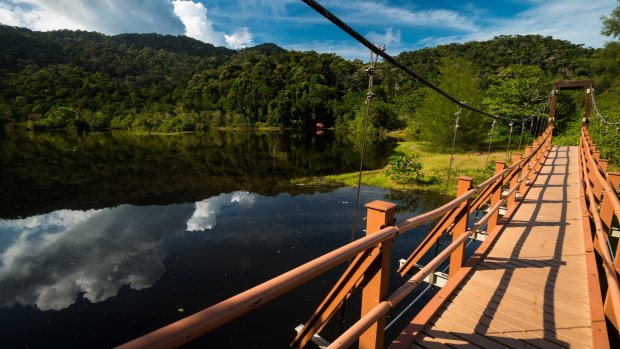
A swing bridge across the meromictic lake.
All is quiet except for the creak of wood as I step onto the hanging bridge. Behind me, the verdant rainforest closes like a velvet curtain, while in front, the golden sand of Kerachut Beach forms a graceful arc. Below, aqua seawater seeps into a tannin-coloured lake.
Penang National Park may be the smallest park in Malaysia, but it puts on one of nature's greatest performances – a meromictic lake, where fresh river water flows across seawater, creating two distinct layers, which in turn creates a rare and dynamic ecosystem.
"There are not too many places on Earth where such a vortex of conditions exist," says Abu Bakar, my guide from the Penang Nature Tourist Guide Association. "You are lucky to see one in your lifetime."
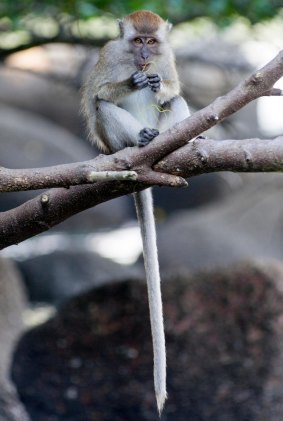
Long-tailed macaque in Penang National Park.Credit: Alamy
Except luck had nothing to do with it. Scarred by a failed attempt to find the lake a few years earlier, I'd plotted my return with military precision. Starting at the park's Pintu Masuk entrance, I'd recorded my manoeuvres into a ledger, booked a private guide and arranged a rendezvous with a small boat for the middle leg of my all-day expedition.
Previous experience had taught me that even though the park is a petite 2522 hectares, the walking trails are more challenging than they seem, most are natural with little in the way of man-made structures, and visitor numbers are low. What sounds like perfect hiking conditions can be a trap for the uninitiated.
With the wind at our backs we follow the coastline for half a kilometre before branching left and climbing steadily west in the direction of Kerachut (Turtle) Beach. While I've allowed 1½ hours for this section, it takes longer as Bakar pauses often, pointing out dusky leaf monkeys with their punk hairstyles, and flying lemurs camouflaged in treetops. It's all delightfully wild and dishevelled, a true wilderness less than 45 minutes from the bustle of George Town.
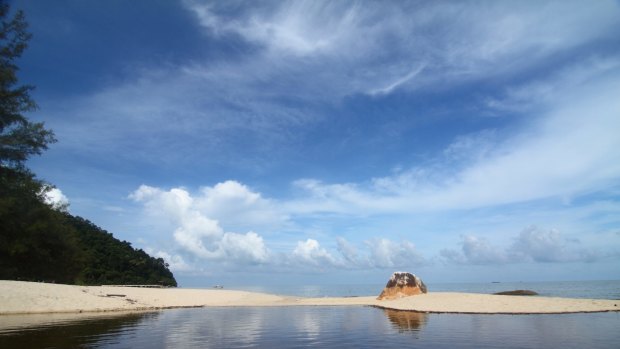
Kerachut (Turtle) Beach.
We press on, keeping an eye out for more crazy creatures: white-rumped shama birds, racket-tailed drongos, monitor lizards, and even a macaque or two. The vegetation is equally intriguing, from the ancient dipterocarp forests, which look like clumps of broccoli, to the spider ferns that clutch at our shins.
Bakar explains that the national park is one of the few naturally forested areas left on Penang Island. "Initially, the forest reserve was tiny, so the government decided to double the park's size by measuring half a nautical mile out to sea and including the ocean within the boundary," says Bakar. "Now the national park covers five major ecosystems – dipterocarp forests, mangroves, open oceans, sandy beaches and a meromictic lake."
The jungle closes behind us as we step onto the swinging bridge, the lake, ocean and beach aglow with the milky light of the Andaman Sea. A muddy path leads us to the lake's edge where gnarled and bent tree trunks stand around like old people, their withered limbs testimony to survival in such an acrid environment.
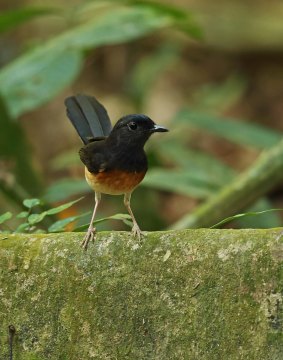
White-rumped Shama (Copsychus malabaricus tricolor).Credit: Alamy
"When the monsoon hits in mid-May, with its big waves, wind and heavy rain, the sandbank collapses and the lake fills," says Bakar. "And there it stays until November."
We spend the next few hours strolling along the empty beach, visiting the small Turtle Conservation Centre and gambolling amid white boulders, their salt-encrusted surfaces looking like bleached bones. The only thing we don't do is swim. "The current will drag you to Thailand," says Bakar. "That's if the stingers don't get you first."
Thankfully our small wooden boat arrives at the predetermined time, whisking us to the northern tip of the island, cutting out the hot trek through the middle and delivering us to Monkey Beach, where it is safe to swim. Afterwards, we sit at a makeshift beach stall and enjoy a chilled coconut water and spicy nasi goreng for the princely sum of MYR11 ($3.50). Here, under the shade of the casuarina trees, the novelty of the two-hour walk back to the park entrance begins to fade. Instead, I put my lunch savings towards a boat transfer; some days, even the best-laid plans need adjusting.
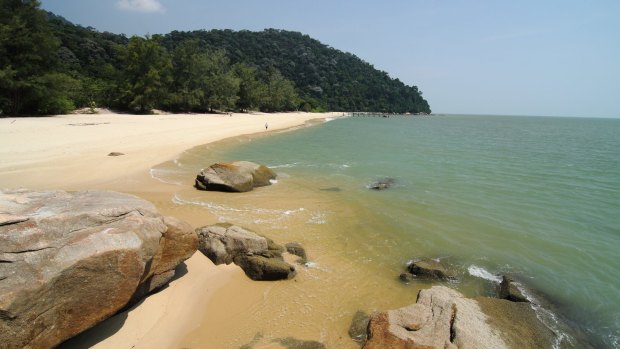
Stretch of sand at Kerachut (Turtle) Beach.
Kerry van der Jagt travelled as a guest of Parkroyal Penang Resort, but paid for her own guide and boat in the national park.
TRIP NOTES
MORE
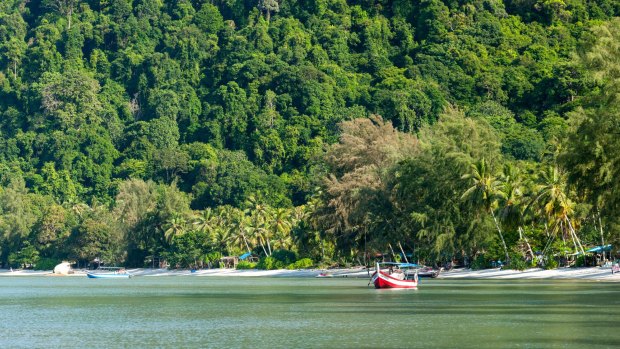
Monkey Beach in the Penang National Park.Credit: Alamy
FLY
Malaysia Airlines flies daily from Sydney and Melbourne to Kuala Lumpur, with onward connections to Penang. See malaysianairlines.com
STAY
Parkroyal Penang Resort, Penang. Premier Seaview rooms start from MYR720 a night. Phone +60 4 886 2288 or 1800 192 144. See parkroyalhotels.com
TOUR
Penang National Park is located in the northwest corner of Penang Island. The main entrance is about 30 kilometres from George Town. Entry is free, but a private guide costs about MYR150 and a boat transfer about MYR100, both booked easily at the park entrance. www.mypenang.gov.my
Sign up for the Traveller Deals newsletter
Get exclusive travel deals delivered straight to your inbox. Sign up now.